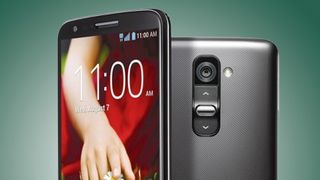The hidden battle inside your smartphone
Fight!
Super-fast G
You might think that next up comes the move from adding megahertz to adding cores. But a more interesting development was bubbling.
In 2010 we saw the very first 4G phone, the HTC Evo 4G. And did you know this is largely down to the chipset too?
While phone processors are often called CPUs — central processing units — they are actually SoCs. These are full Systems on a Chip.
They dictate CPU power, graphics grunt and the connections a phone can cope with. The HTC Evo 4G used a connection called WiMAX. It's not what our 4G networks use these days, and was only available in the US, but it was a precursor to current 4G networks.
Did you know you can now get a 4G phone for under £50/$80, with devices like the Huawei Ascend Y550? Back in 2010 the Evo 4G sold for $699.
More speed less haste
Look at the development of phone processors between 2010 and now, and it's easy to focus on how we jumped from two cores to four cores, and then to eight. But the numbers quickly lost their meaning as we met dual-core phones more powerful than some quad-core ones. Not to mention quad-core phones like the Huawei Ascend P7 that were still a bit slow.
For a long time now, actual day-to-day phone performance has been much more to do with software optimisation than raw power.
Get daily insight, inspiration and deals in your inbox
Get the hottest deals available in your inbox plus news, reviews, opinion, analysis and more from the TechRadar team.
In the last couple of years we've seen Qualcomm and rivals like MediaTek switch from trying to offer more and more power, to greater efficiency. This is perfectly demonstrated by the Qualcomm S4 series and its successors, the Snapdragon 600, 800, right up to the chips we see today.
This video sums it up pretty well:
Getting a sweat on
The more efficient a chipset is, the less of its energy is transferred as heat. And heat is waste. No-one wants a hot phone, but more importantly, no one wants a phone that is going to run out of power by 6pm by wastefully draining its battery.
This became incredibly important in 2013, just as Qualcomm was firing the Snapdragon 600 out of its factories. Why? Because we were starting to get phones with as many screen pixels as our TVs.
That phones like the LG G2 are able to last as long as they do while being under 9mm thick is a technical miracle. Now that even higher-res QHD phones like the Galaxy Note 4 are the norm, that
efficiency becomes all the more important.

It's all about a rating called TDP, thermal design power. This tells you how much heat a chip will create when running at full power. The Snapdragon 810's TDP is 3.2W, while skipping back a few years in laptop CPUs, the Intel Core i5-540M offers lesser performance according to Geekbench 3, but has a TDP of 35W.
Granted, laptops don't have to stay as cool, but that should tell you how far we've come.
Not only are CPU transistors getting smaller every year, there are now dedicated chips that track the output of sensors like gyroscopes and accelerometer for low-power fitness tracking, and system architectures are designed entirely around power-saving.
The Snapdragon 810 is a good example: it has four cores that use very little power for day-to-day tasks and four 2GHz Cortex-A57 cores when it needs to go in, all guns blazing.
The world in miniature
The efficiency of chipsets like the 28nm Snapdragon 805 and 20nm Snapdragon 801 isn't just about phones, either. This miniaturisation drive is what makes powering wearable tech feasible.
Chips are smaller, more power-frugal, than ever. And if you want a smartwatch that lasts a week, you should be paying attention.

At the moment it's Intel showing where we might be headed next. It is already working on 10nm chipsets, and has has outed aspirations to reach 7nm within the next few years.
If screen and battery tech can keep up the pace, the future is looking very bright for devices of the future, whether they are in our hands, on our wrists or mounted on our heads.
Andrew is a freelance journalist and has been writing and editing for some of the UK's top tech and lifestyle publications including TrustedReviews, Stuff, T3, TechRadar, Lifehacker and others.
Most Popular


